Table of contents
Black mulberries ( Morus nigra) are very juicy and taste sweet when raw; when dried they are reminiscent of raisins.
Use in the kitchen
In addition to the black mulberry ( Morus nigra), there is also the white mulberry ( Morus alba ) and the red mulberry ( Morus rubra). The black berries look like elongated blackberries.
Can you eat mulberries raw? Fresh mulberries are suitable for eating raw. Black mulberries are preferred as fresh berries for eating raw, as they have a more intense taste than white berries. When dried, the berries lose their color and the taste is similar to raisins.
The raw berries are mainly used to make jams and jellies or to make cakes, biscuits and other sweet dishes (sorbets). Mulberry juice made into syrup tastes similar to blackberry juice. The juice of the black mulberry is very intensely coloured and difficult to remove. You should therefore wear rubber gloves when picking the berries and preparing them in the kitchen.
Black mulberries in smoothies add a beautiful color. They also go well raw in fruit salad, in vegan muesli ( pea muesli) or in a spicy salad. Steamed vegetables refined with mulberries, such as red cabbage, taste excellent.
Mulberries can also be processed into mulberry wine. You can either mix the mulberries with wine or let them ferment like wine. You can find a report on making mulberry wine here: Fruit wine from mulberries, homemade mulberry wine.
Vegan recipe for mulberry and tomato salad
Ingredients (for 4 people): 120 g mulberries, 2 tbsp apple cider vinegar, 2 tbsp rapeseed oil,black pepper, 1 red onion, 500 g beef tomatoes, 1 handful of fresh basil leaves.
Preparation: For the dressing, mash 6 mulberries in a bowl with a fork. Mix with apple cider vinegar, rapeseed oil and black pepper. Peel the red onion and cut into thin slices, add to the dressing and leave to stand for 10 minutes. Wash the tomatoes and cut into wedges, arrange on a plate and drizzle with the dressing. Scatter the remaining berries and basil leaves on top and serve immediately.
Vegan recipes with black mulberries (raw) can be found under the note: " Recipes that have the most of this ingredient ".
| Not only vegans or vegetarians should read this: Vegans often eat unhealthily. Avoidable nutritional errors. |
Purchasing - Storage
Because the berries of the black mulberry are very juicy and soft, they are practically never found raw in shops. That is why you will hardly find fresh black mulberries in the range at major retailers such as Coop, Migros, Denner, Volg, Spar, Aldi, Lidl, Rewe, Edeka, Hofer and Billa. They are also not available for purchase in organic supermarkets such as Denn's Biomarkt and Alnatura.
Occasionally, fresh black mulberries can be found seasonally at weekly markets or in farm shops.
You can buy dried mulberries in selected supermarkets and health food stores; they are usually berries from the white mulberry tree. Dried black mulberries are also available online.
The availability of black mulberries varies depending on the size of the store, catchment area, etc. Our recorded food prices for the DA-CH countries can be found above under the ingredient image - and by clicking on them you can see their development at different suppliers.
Storage tips
Fresh black mulberries release their juice very quickly, which is why they should be eaten within a day if possible. Like other berries, they can be stored in a glass container in the refrigerator for 1-2 days. 2
Ingredients - Nutritional values - Calories
Raw black mulberries have a very low energy value of 43 kcal/100g. They consist of 88% water and contain practically no fat (0.39 g) and very little protein (1.4 g). The sugar content is 8.1 g/100g. In total they have 9.8 g/100g carbohydrates. The fiber content is average for berries at 1.7 g/100g. 1
Black mulberries are rich in vitamin C (ascorbic acid). The 36 mg per 100 g of berries, corresponds to 46% of the daily requirement. Sea buckthorn berries (450 mg/100g) and black currants (181 mg/100g) have very high vitamin C contents. This is many times more than lemons and oranges (both 53 mg/100g). 1
100 g of mulberries provide 1.8 mg of iron, which corresponds to 13% of the daily requirement.Black elderberries,red elderberries and aronia berries have comparable values (all 1.6 mg/100g). This is a high iron value for berries. Spinach, known as a good source of iron, has only slightly more iron at 2.7 mg. Good sources of iron are herbs, nuts, seeds and kernels, as well as pulses and dried fruit. 1
Potassium is contained at 194 mg/100g, which corresponds to 10% of the daily requirement. Gooseberries (198 mg) and grapes (191 mg) have similar potassium values. Good sources of potassium are herbs, pulses and nuts, such as dried parsley (2680 mg/100g), white beans (1795 mg) and almonds (730 mg). Green vegetables such as spinach (558 mg) and lamb's lettuce (460 mg) can also help to meet potassium requirements. 1
The complete ingredients of black mulberries (raw), the coverage of the daily requirement and comparison values with other ingredients can be found in our nutrient tables. In the article Nutrients explained you will get a detailed insight into the topic.
Health effects
Are mulberries healthy? Mulberries contain valuable nutrients, but also a lot of sugar. When consumed in small portions, the black berries are extremely healthy. They contain large amounts of vitamin C and iron, as well as secondary plant substances such as phenolic compounds, flavonoids, quercetin, kaempferol and anthocyanins. 1,5,6 Studies show that mulberries have antioxidant, antimicrobial and anti-cancer effects. Some varieties also work against the yeast Candida albicans. 5
The anti-inflammatory properties of black mulberries (fruits and leaf extracts) have been demonstrated several times in animal models (rats and mice). 4 Studies on rats also show that the consumption of black mulberries or extracts thereof has a blood pressure-lowering effect and reduces oxidative stress. 5,6
Do mulberries help you lose weight? Fresh mulberries (raw) have few calories but a high sugar content. They are a valuable addition to your diet when eaten in small portions. Like other fruits and vegetables, they can help you lose weight. Dried mulberries and other dried fruits should be avoided if you want to lose weight, as they contain a lot of calories and sugar per portion and you tend to eat too much of them.
You can find more information on the topic of weight loss in the article Lose weight healthily and permanently.
Folk medicine - natural medicine
Black mulberries are traditionally used against mouth injuries and infections in the oral cavity (tonsillitis, candidiasis). 5
Dangers - Intolerances - Side effects
Mulberries can interact with certain medications because they affect the metabolism in the liver. Taking them together can lead to an increased concentration of the drug in the blood, which can lead to dangerous complications. 4
Ecological footprint - animal welfare
The ecological footprint of a food depends on factors such as the type of agricultural production (conventional vs. organic), seasonal, regional or domestic production or import by truck, ship or plane, different types of packaging and whether the product is fresh or frozen. Organically produced mulberries from Turkey have a CO 2 footprint of 0.026 kg CO 2 eq/kg. 8
Mulberry trees could play a major role in environmental remediation. They are ideal plants for reforestation, soil conservation, CO 2 storage and bioremediation (biological detoxification of ecosystems) of heavy metals in appropriate areas. In addition to the fruit, the leaves of the mulberry tree are particularly economically interesting. These are used to feed silkworms and livestock. 9
Worldwide distribution - cultivation
Mulberry trees ( Morus) are found in the south tropical regions of Asia (including Korea, Japan, China and India), as well as North America, South America and North Africa. 4,5 The black mulberry ( Morus nigra) and white mulberry ( Morus alba) are native to Asia. The red mulberry ( Morus rubra) comes from North America.
The original origin (gene center) of the black mulberry is southwest Asia. In Asian countries, the mulberry is cultivated primarily for the rearing of silkworms, as the mulberry moth feeds on the leaves of the white mulberry tree. Mulberries have also been cultivated in Europe for several centuries, where they are used primarily for their fruit. 4
Cultivation - Harvest
In areas with a mild climate ("wine-growing regions"), mulberry trees can be planted in the garden. Mulberry trees can grow to a height of 8 to 10 meters, in exceptional cases even 15 meters. Dwarf mulberries can be cultivated in a very large pot. Mulberries are heat-loving plants that prefer a sunny and wind-protected location. They require nutrient-rich, slightly calcareous soil. Since they tolerate drought well, they also grow on sandy soils. In the first few years, they should be watered, as the roots are not yet fully developed. 3
Light green, hanging catkins appear from May onwards. Most varieties have male and female inflorescences. However, there are also unisexual trees. In order for fruit to form, you then have to plant a male and female plant close together. The blackberry-like berries ripen from the end of June to August. Depending on the variety, they vary in size, some reach up to 10 centimetres. These are false berries, actually aggregate nuts, some of which are also seedless. As soon as the berries are completely black, they are ready for harvest. If the berries are red-black, then they are only half ripe. These can also be eaten, but red spots are sour. In some areas, cloths or foil are placed under the trees and the trees are shaken so that the ripe berries fall down. Picking by hand is more gentle, but more time-consuming. 3
Mulberries are sensitive to frost and cold when they are young. It is therefore important to protect the young tree from frost before winter with a layer of mulch and jute fabric. 3
Further information
Mulberries ( Morus), like figs ( Ficus), are a genus of plants in the mulberry family (Moraceae).
Alternative names
The English name for the black mulberry is black mulberry.
Bibliography - 8 Sources
| 1. | USDA United States Department of Agriculture. |
| 2. | Bundeszentrum für Ernährung. Lebensmittellagerung im Haushalt (PDF). |
| 3. | Plantura.garden. Maulbeere: Standort, Schneiden & Pflegen des Maulbeerbaums |
| 4. | Lim SH, Choi CI. Pharmacological Properties of Morus nigra L. (Black Mulberry) as A Promising Nutraceutical Resource. Nutrients. 2019 Feb 20;11(2):437. |
| 5. | Sakar E, Ericisli S et al. Black mulberry (Morus nigra L.) fruits: As a medicinal plant rich in human health-promoting compunds. Open Chemestry. 2023;21(1):20220323. |
| 6. | Maqsood M, Khan MI, Sharif MK, Faisal MN. Phytochemical characterization of Morus nigra fruit ultrasound-assisted ethanolic extract for its cardioprotective potential. J Food Biochem. 2022 Nov;46(11):e14335. |
| 8. | Eren O, Baran MF, Gokdogan O, Determination of Greenhouse gas emissions (GHG) in the production of different fruits in Turkey. Frensius Environmental Bulletin 2019;28(1):464-472. |
| 9. | Rohela GK, Shukla P, et al. Mulberry (Morus spp.): An ideal plant for sustainable developlement. Trees, Forests and People, Dec 2020;2:100011. |

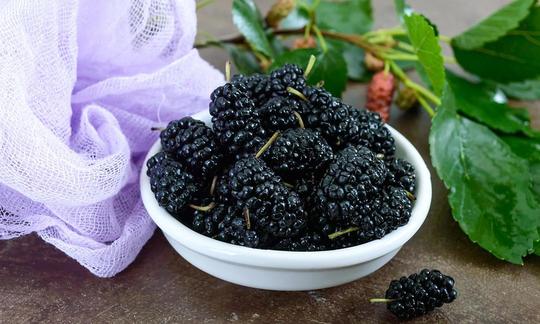

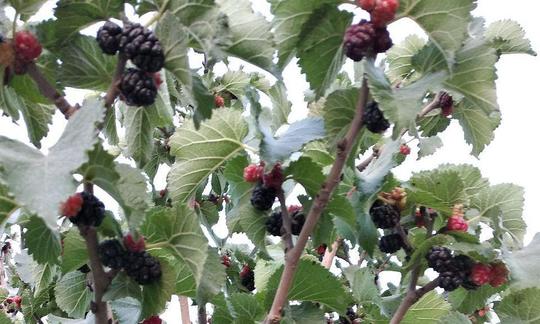

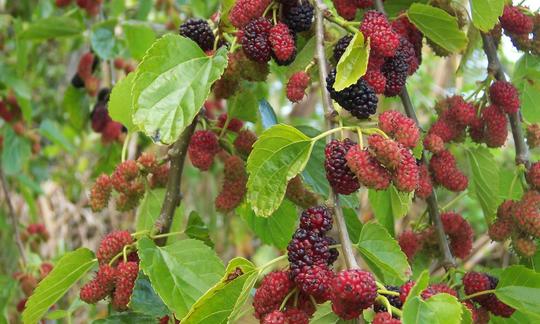

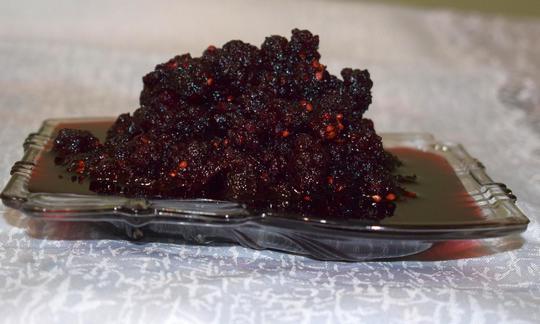

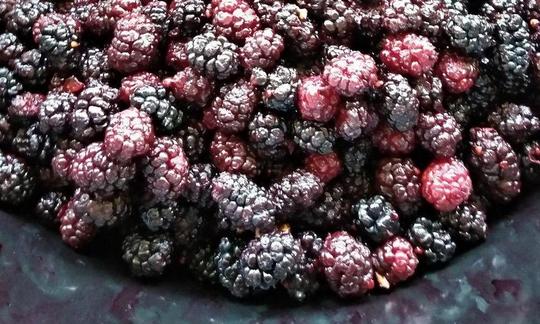






Comments